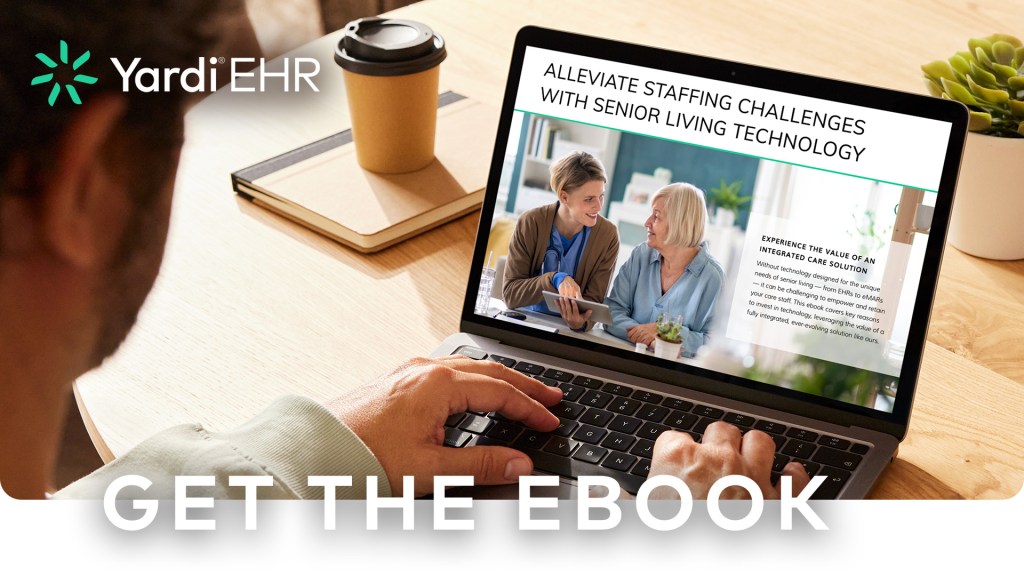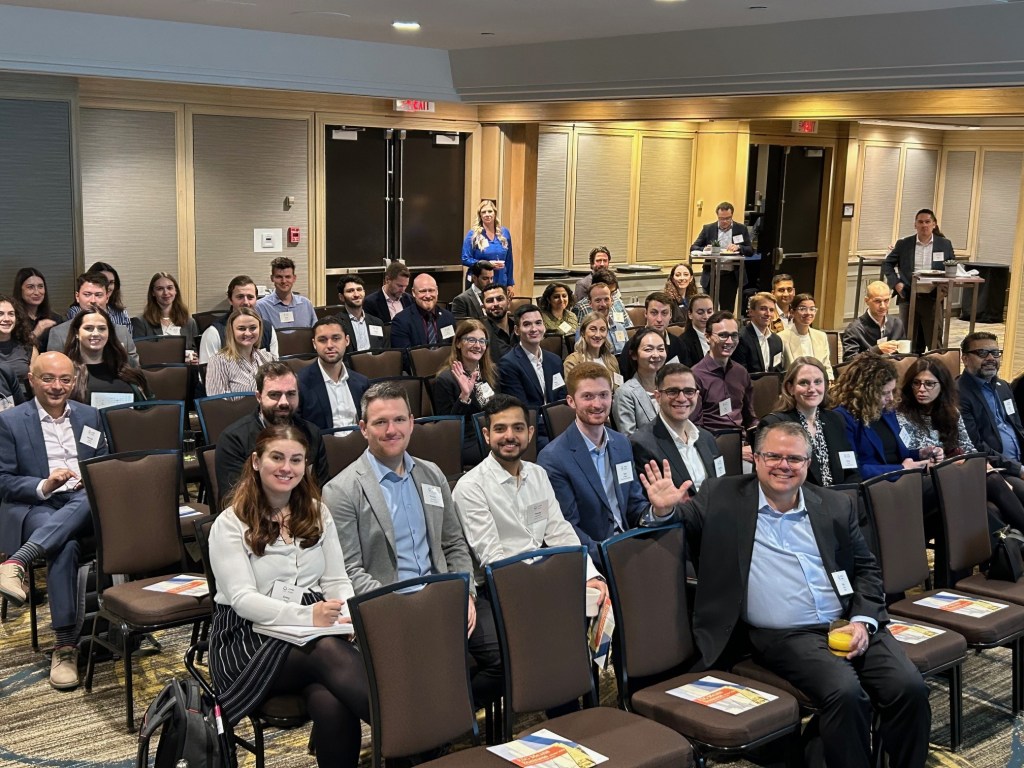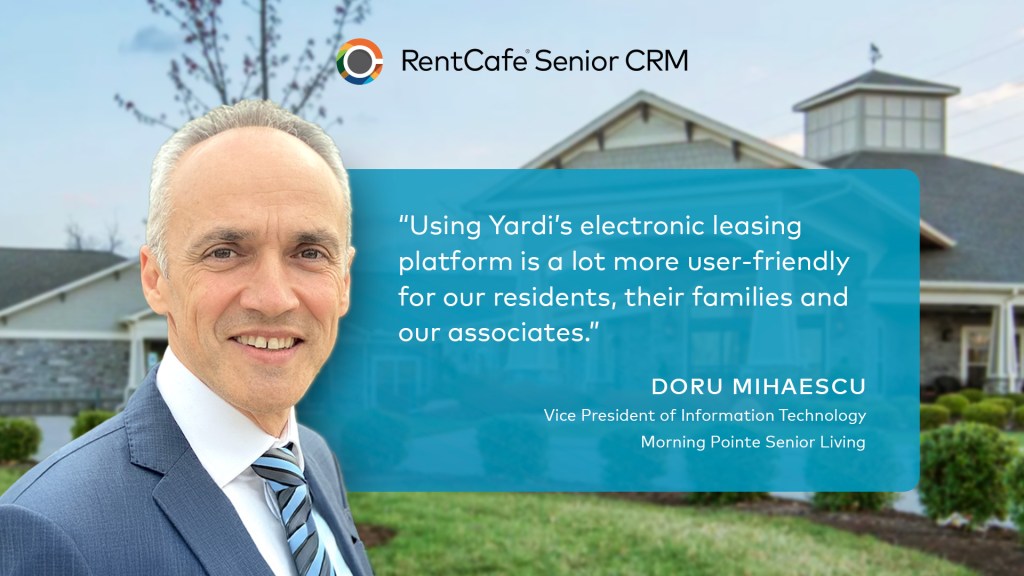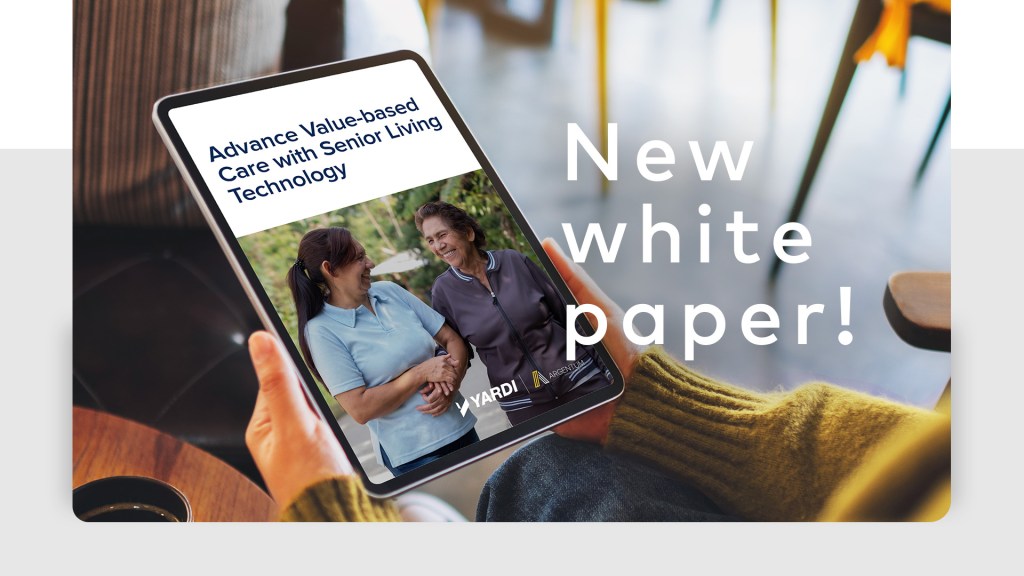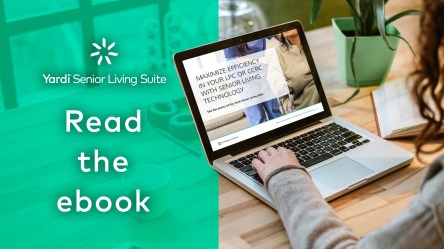The holiday season can be an excellent time for selling property as buyers are more serious and motivated to close by the end of the year. Let’s explore how to strike the right balance with holiday décor so it enhances cozy appeal without distractions. Keep it minimal Too much decoration can overwhelm buyers, making it hard for them to envision themselves there. Opt for a simple, elegant theme to avoid overwhelming space. Use a neutral color palette like whites, golds and silvers that complement the interior. Avoid personalized or themed decorations. Highlight key features Use decorations to draw attention to the property’s best aspects. For example, frame a fireplace with a simple garland or neutral stockings to emphasize their warmth and charm. Use string lights or wreaths to accentuate large windows or outdoor spaces. Add greenery or lights to a staircase railing for an elegant touch. Create a cozy atmosphere Use subtle scents like cinnamon, pine or vanilla to evoke warmth without overpowering the senses. Add cozy touches like warm blankets, a crackling fire or candles for an inviting ambiance. Avoid overly bright fluorescent lighting during the showing. Bonus tip: include soft holiday music for a sensory boost. Do not overdo outdoor décor Keep yard decorations tasteful—avoid inflatables or overly busy setups. These can distract from the property’s features and may not appeal to all buyers. A classic wreath, well-placed string lights and a tidy entrance with poinsettias can create excellent curb appeal. Ensure walkways and driveways are clear of snow, ice and debris for safety and accessibility. Avoid decorations that create a cluttered or cramped feeling in rooms Consider downsizing the tree to fit the space while adding a festive touch. Temporarily remove any furniture or items that could make the space feel...
Streamline Senior Living Care
Unify Your Operations With One Platform
Like sorting through a giant keyring to find the right key for each door in a large building, siloed software systems waste valuable time for senior living communities. Navigating various platforms and manually transferring data both increase the risk of errors and place a burden on your staff. Imagine the difference when you have a master key that opens every door. With the Yardi Senior Living Suite you unlock everything you need with one interconnected solution that unites financials, care, business intelligence and more on a single platform. Why switch to a single connected solution? If you’ve used disconnected software tools, you’ve likely experienced the frustration of data-entry errors, time wasted digging for answers and the hassle of transferring information from one system to the next. Disparate tools rarely communicate as efficiently as single-stack solutions, if they talk to each other at all. Siloed systems can also be more costly, requiring multiple licensing fees and the expense of maintaining and upgrading each individual system. With a single connected solution like the Yardi Senior Living Suite, you alleviate these challenges, risks and frustrations. Access every tool needed in one secure place, empowering your teams with an intuitive platform that improves care and enhances efficiency. What makes the Yardi Senior Living Suite an unmatched solution? The Yardi Senior Living Suite is designed specifically for senior living operators, offering more than your average solution. Hosted on a cloud-based, HIPAA and SOX-compliant platform, these tools support the full spectrum of senior living — from independent living to continuing care retirement communities (CCRCs) to value-based care. We prioritize our clients’ success and long-term growth, resulting in a platform that’s ever evolving and cutting edge. We’re proud to be a Forbes Cloud 100 software provider supporting our clients for 40+ years. Explore our full product suite to learn more, including: Yardi Voyager Senior Housing, a community management powerhouse, combines property management, financials and complete business oversight Yardi Senior IQ, the only business intelligence solution built for senior living, helps you make smarter, faster decisions with actionable information across your portfolio Yardi EHR, a full-service, interoperable electronic health record solution, helps mitigate errors and limit liability, empowering staff to deliver the best resident care RentCafe Senior CRM, a collection of mobile-friendly sales and marketing tools, helps you attract new residents, nurture leads and maximize occupancy RentCafe Senior Living Portal, a secure online platform keeps residents, families and staff connected around the clock Book time with us Integrated software offers advantages that siloed systems can’t match. Wouldn’t you rather have a master key to unlock everything you need to operate your senior living community? If you’re ready to see the Yardi Senior Living Suite in action, reach out to meet with...
Retail Depravity ...
Is AI the solution?
With fewer consumers in-person shopping and America’s shoplifting epidemic, retailers have their work cut out. Let’s explore what’s happening in retail stores and how this holiday season can make or break them. In-store experience competes with e-commerce Many still crave that in-store shopping experience. Brick-and-mortar retailers can offer unique experiences to retain consumers. Personalized customer service is essential for building trust and community. For example, Nike elevated personalized in-store experiences by leveraging customer feedback collected via in-store surveys and its NikePlus loyalty program. The brand hosts exclusive events for NikePlus members, providing them early access to new releases, limited-edition products and the chance to meet professional athletes. These events create a sense of exclusivity and make consumers feel part of an elite community, strengthening their bond with the brand. Immersive experiences such as live demos, workshops, and events help get word-of-mouth marketing accomplished and increase the number of consumers inside the stores. For example, Eataly debuted at NorthPark Center in Dallas amid the pandemic. However, its eating, shopping, and learning concepts have made it known, and the numbers are soaring. This gigantic Italian market, with fresh pasta, luxe Italian ingredients, and plenty of local goodies, also serves as a cooking school. Artificial Intelligence has the potential to revolutionize the in-person shopping experience. The older generation may seek AI technology for convenience, while the younger generation would use AI to shop and engage with brands. IBM reports that three in five consumers are interested in using AI applications while they shop. From obtaining product information, finding deals and promotions, getting service, asking questions, and resolving issues, AI can provide a seamless, dynamic, and contextual experience. This could range from the ability to shop for products from multiple brands on a marketplace with a single checkout...
The Sky’s No Limit
See Astronomical Phenomena
Looking for easy, fun and free activities to fill your winter nights? Step outside and open your eyes to some spectacular upcoming astronomical events. Dec. 7: Jupiter at opposition The largest planet in the solar system lies opposite the sun in the sky and will be visible all night in the constellation Taurus. Dec. 8: Saturn near moon The ringed planet will appear close to the moon in the constellation Aquarius. Dec. 14-15: Geminid meteors; Jupiter and moon Normally one of the best meteor showers of the year, with 100-120 per hour, the Geminids will be somewhat obscured by the full moon. Meteors are caused by streams of cosmic debris that enter the Earth’s atmosphere. Also on Dec. 14, Jupiter will appear close to the 98%-illuminated moon in the constellation Taurus. Dec. 18: Mars near moon The red planet will appear close to the 92.3%-illuminated moon in the constellation Cancer. Dec. 22-23: Ursid meteors The last major meteor shower of the year peaks this night, from after sunset until moonrise. Under ideal conditions, as many as 10 meteors could be visible per hour. Dec. 25: Mercury at greatest elongation west The closest planet to the sun will appear at its farthest apparent distance west from the sun, an event known as the greatest elongation. It’s the best time to observe Mercury. Jan. 2-3: Quadrantids meteors Keep the New Year celebration going by viewing this meteor shower at its peak. With the moon only 11% full and set before the shower begins in earnest, the display will be visible from anywhere in the Northern Hemisphere with clear skies and little light...
Cozy Rentals for Fall...
Home Away from Home
Fall is a perfect season for property owners of short-term rentals to offer the best fall essentials and aesthetically pleasing elements. These unique features can transform the property into a home away from home for guests, enhancing their cozy rental experience. Aesthetically pleasing When it comes to fall decorations, it’s all about creating a warm and inviting atmosphere. Beyond the traditional cornucopias, a warm color palette and seasonal colors can transform the property into a cozy haven. Think deep reds, muted browns, and this year’s Pantone color of the year, peach fuzz. This versatile shade can adapt to different style preferences, making it perfect for a warm and cozy aesthetic. Incorporate these colors into throw pillows, blankets and curtains to instantly evoke that fall feeling. Don’t forget to bring the outdoors in with natural elements like pinecones, dried leaves, acorns, apples and mini pumpkins. Display them in bowls or baskets on tables and countertops to add a rustic, autumnal touch. Visual interest and dimension Focus on textured layers and comfort items, such as adding chunky knit blankets, plaid throws and soft area rugs. Include some fuzzy socks or slippers in the same color palette as the interior for extra comfort. By layering different fabrics, it makes spaces feel warm and inviting. Layer scents for a fragrance fiesta with various scented candles throughout the space, creating a three-dimensional cozy candle scent experience. Choose seasonal colors, shapes, and candles of different sizes. Light it up Since candles offer a warm, soft glow, include lighting that mimics that same feeling. String some fairy twinkle lights or lanterns to add ambiance. Dimmable bulbs can also make spaces feel warmer. If located in more of a chiller location, have the ultimate outdoor experience with outdoor fire pits or patio...
Empower and Retain Staff
With Senior Living Technology
In today’s landscape of operating senior living communities, how can you alleviate staffing challenges? Organizations of various sizes seek answers in technology. Yet, how do you find the right technology that won’t overwhelm your essential care staff who are already busy? Our single connected solution — the Yardi Senior Living Suite — can simplify daily tasks for caregivers, helping you empower and retain your team members. For insight into actions that can promote both staff satisfaction and quality of care for residents, don’t miss our informative new ebook. After checking out a few highlights here, explore the full ebook. Why choose a single connected solution for your senior living community? According to 2024 data from the American Health Care Association, two-thirds of senior living communities are concerned they may have to close due to ongoing workforce challenges. Over 50% say their workforce situation has stayed the same or gotten worse in the past six months. 7 out of 10 still have fewer employees than they did before the pandemic. 46% are limiting admissions due to labor shortages. With no end in sight for these staffing challenges, it’s critical to invest in tools that simplify daily tasks for your caregivers — and incentivize them to stay longer. How does our technology support staff retention? Supporting your staff with an integrated electronic health record (EHR) and electronic medication administration record (eMAR) solution helps them provide better care for your residents. Take a closer look at how our comprehensive care solutions support staff by: Uniting integrated workflows on a single platform. Supporting all types of senior living including independent living, assisted living, memory care, skilled nursing and life plan communities/continuing care retirement communities. Reinforcing value-based care (VBC) initiatives that empower staff. Keeping sensitive data safe with HIPAA and SOX compliance. Delivering solutions backed by a Forbes Cloud 100 company with 40+ years of industry experience. Providing interoperability and secure interface partners. Simplifying staff training with robust, built-in educational materials that allow employees to learn at their own pace, including videos, recorded webinars and job aids. Explore our integrated care solutions Yardi EHR: Yardi EHR is a full-service electronic health record solution that unites clinical intake processing, medication management, resident assessments, interoperability, care planning and more. It enables streamlined analysis of population health metrics and real-time information sharing — helping you track and improve resident health outcomes. Yardi eMAR: Yardi eMAR is a comprehensive medication management solution built for senior living. It streamlines medication passing and facilitates seamless communication between pharmacies, care staff and senior management, all on a single platform. Read the ebook in full The Yardi Senior Living Suite offers more ways to improve staffing challenges — read the ebook in its entirety to learn more. And if you have any questions for our team, don’t hesitate to reach...
Getting Attuned
Using Music to Sell
You might notice it sometimes but it’s usually unobtrusive, discernable only if you stop what you’re doing and concentrate on it. It’s the background music that accompanies your visit to many retail stores and restaurants around the world. Clinical research indicates that a store’s atmosphere affects the emotional states of consumers by appealing to the pleasure centers of the brain. Customers who listen to music they like are more likely to stay in stores longer and make return visits, according to data gathered by Mood Media, an Austin, Texas-based sound design agency that specializes in music for public spaces including those operated by Dunkin’ Donuts, The Home Depot and Wendy’s. “Retailers with a sound knowledge of how in-store music influences shopper’s attitudes can harness its powerful effects on the human mind,” says Tampa, Fla.-based Spectrio, a customer engagement specialist firm. “Choosing music for your shop involves sending shoppers the right message: you want them to feel positive and confident in their shopping choices, living in the moment and excited to make a purchase.” Setting the mood Researchers generally agree that slower, more leisurely music causes shoppers to spend more time contemplating their purchases and enjoying the atmosphere. Up-tempo or fast-paced music encourages quicker shopping. The type of music can matter as well. For example, classical music projects an air of expense and quality, suitable for expensive merchandise such as upscale fine foods. Top 40 pop music might be ideal for teenagers, whereas country music could be the best enticement for shoppers at outdoor clothing stores. “A bookstore may benefit from mellow music played at low volumes, which lets customers peruse books before buying them. A clothing store wishing to project youthful energy may opt for upbeat music at higher volumes,” reports Shopify, a Canadian company...
Holiday Energy Efficiency
Eco-friendly Celebrations
The holiday season is ramping up, but your bills don’t have to! Enjoy the holidays without worrying about rising energy costs. Let’s explore some simple tips for keeping your home cozy and using low energy this winter. Put down the sponge: Did you know you use up to 27 gallons of water per load by hand-washing dishes? According to the Natural Resources Defense Council (NRDC), an ENERGY STAR®-rated dishwasher only uses three gallons of water per load. An ENERGY STAR-certified dishwasher can save almost 5,000 gallons of water per year. In 2013, dishwashers were introduced with new standards that required them to only use as much as five gallons per load. Be sure it’s a whole load before running the dishwasher, and scrape food remnants into the trash before loading it. Prerinsing wastes more than 6,000 gallons of water per household yearly. Opt for small appliances: Embrace the convenience of using small appliances such as slow cookers, instant pots, toaster ovens, air fryers or microwaves. These energy-efficient alternatives save more energy than the oven or stove, making cooking a breeze. Instant pots or slow cookers are perfect for cooking side dishes like casseroles or chilis. Toaster ovens can quickly reheat leftovers and bake cookies or small cakes. Keep lids on: While cooking on the stove, cover pots and pans with lids to reduce heat waste, save energy and help food cook faster. No peeking: Can’t seem to stop looking at that delicious turkey? Use the oven light instead of opening the oven several times. A substantial amount of heat escapes whenever you open the oven door while cooking. Keep the door shut to save energy and cut back on cooking time. Sharing is caring: Maximize oven efficiency and the joy of the holiday season by baking multiple dishes together. Roasted vegetables and meats are a delicious duo that can be cooked together. Use ceramic or glass baking dishes to retain heat better than their metal counterparts, making them the most energy-efficient option for baking. Stay warm: As the kitchen heats up with cooking, so does the rest of the house. Turn the thermostat down a few degrees to save energy and stay comfortable. Turn down the heat even further when having a holiday gathering since extra body heat from guests should help keep everyone comfortable. Light it up: Here’s a bright idea for holiday lights—use LED lights! According to energy.gov, LEDs use up to 70 percent less energy than conventional incandescent bulbs and last about ten times longer. Some companies offer rental services for solar-powered light displays. These simple acts of responsibility can significantly reduce your energy bills during the holidays, giving you a sense of financial security and control over energy...
Yardi Co-Hosts GRESB Event
Advancing Sustainability in Real Estate
In October 2024, Yardi proudly co-hosted the year’s first GRESB Regional Insights event in Toronto, bringing together industry leaders and experts to discuss trends in real estate energy and sustainability. The event focused on the critical role of ESG (environmental, social, governance) in shaping the future of real estate, offering attendees valuable opportunities to learn from thought leaders, network with peers and explore rising trends in real estate practices. For over 15 years, GRESB has been at the forefront of sustainability within the real estate sector, setting benchmarks that drive transparency, accountability and long-term value creation. GRESB’s comprehensive assessments and data-driven insights have become crucial for investors and asset managers seeking to integrate ESG principles into their strategies and operations, particularly as they navigate sustainability challenges and develop innovative solutions. Key insights With over 65 attendees and a full morning schedule, industry leaders like Dan Winters from GRESB shared critical updates on sustainability trends, stressing the importance of data-driven strategies to achieve ESG goals. He emphasized the need for real estate firms to align with evolving global standards and adopt innovative approaches to sustainability reporting. Darryl Neate from REALPAC and Rob Simpson from Caisse de dépôt et placement du Québec (CDPQ) highlighted the growing role of ESG in real estate investment decisions. Their discussion centered on how real estate organizations can adapt to increasing regulatory pressures by embedding sustainability into every level of their operations. As ESG reporting requirements continue to grow, the demand for accurate data and streamlined processes is more critical than ever. Rebecca Everts, senior energy benchmarking analyst at Yardi, discussed the importance of precise data management in tracking and analyzing building energy consumption. Yardi Energy has established itself as a leader in this field, equipping clients with tools to efficiently collect and analyze energy data. Much of the event’s discussion centered on the benefits of centralized data and clear reporting guidelines. Rebecca noted, “Reporting data for multiple organizations and clients can be complex, especially with different reporting timelines. Having well-organized data stored in one place makes it easier to review, ensure accuracy and streamline the reporting process.” Rebecca also stressed that integration and data transparency are key to meeting the rising demand for ESG compliance. Yardi’s solutions help clients tackle these challenges head-on by offering advanced technology that simplifies the data collection and reporting process. Overcoming challenges in ESG reporting While the benefits of ESG integration are clear, the journey toward full implementation is not without its challenges. As other panelists, Bozena Jankowska of Slate Asset Management and Jessica Pilz of Fiera Capital, pointed out, successful ESG reporting requires more than just data—it demands passion, patience, and perseverance, the “three P’s” of ESG. They emphasized that ESG integration involves multiple stakeholders across an organization, and support from senior leadership is crucial in driving sustainable initiatives forward. Additionally, collecting reliable data, particularly from external vendors, can be a challenge. However, with best practices like centralizing data collection and encouraging regulatory compliance, organizations can ensure smoother ESG reporting. A look to the future This event emphasized that sustainability is no longer just a trend—it’s a necessity in today’s real estate market. As the demands for ESG transparency grow, real estate organizations must stay ahead by embracing innovative solutions, fostering a culture of sustainability and centralizing their data. Centralized data not only streamlines the reporting process but also enhances data accuracy and transparency, helping organizations meet compliance standards more effectively. Yardi is proud to be part of this important conversation and looks forward to driving positive change in the industry. To learn more about how Yardi’s energy solutions can support your ESG goals, watch a...
Pane Gains
Window Glass Goes High Tech
Much of the discussion about energy efficiency in commercial and residential buildings focuses on heating and cooling systems. But windows, which account for more than half of a modern skyscraper’s exterior surface area, are earning their share of attention in the search for smart solutions for buildings. Commercial buildings account for about 40% of carbon emissions. Glass traditionally used in skyscrapers easily transfer heat from the inside to the outside, leading to higher energy consumption for heating and cooling. In response, advanced materials and engineering are driving a “revolution” in the building industry, “one that is set to transform the way we think about construction and energy efficiency. At the center of this revolution lies glass,” says Görkem Elverici, CEO of Şişecam, a leading glass manufacturer based in Turkey. For example, low-emissivity (low-e) coatings incorporate an extremely thin coating of silver, zinc or indium tin oxide to reduce heat loss and heat gain through windows. They also help prevent the damaging effects of ultraviolet light on furniture, floors and other items. Insulated glass units often fit into existing window frames, eliminating the need for costly redesigns and retrofits. Other energy-efficient windows contain sealed layers of argon gas, which combine with low-e glass and vinyl framing for greater comfort and energy cost savings. Secondary glazing involves improving a window’s insulation with an additional windowpane. With this technology’s potentially not yet fully realized, the U.S. Department of Energy (DOE) is sponsoring prizes valued at $2 million to encourage innovation of high-performance, cost-effective secondary glazing systems for commercial building windows. The prizes will be announced by May 2026. “Less than 1% of commercial buildings get full window replacements each year because it is so expensive and disruptive for occupants. Secondary glazing systems can help solve this problem,”...
Should Lawns
Be Cut (Out)?
Praised by advocates for their beauty and central role in American history, derided by critics for their environmental impacts, lawns – the largest irrigated crop, by area, in the U.S. – occupy a singular place in the American psyche. Lawns, which occupy 40 million acres in the U.S. and consume around 9 billion gallons of water daily, entered the American consciousness early, with resplendent expanses in Britain and elsewhere in Europe inspiring many former colonists. Estates like the White House and Mount Vernon helped popularize the lawn in American culture. In the post-World War II era, boosted by a robust economy and political policies that encouraged homeownership, lawns “became a measure of civic responsibility. The perfect, uninterrupted green of suburban landscapes came to represent the ideal community. The lawn had become by now more than just a part of the home; it is a visible expression of adherence to community norms and values,” says the National Wildlife Federation. Environmental concerns Starting in the 1920s, various chemicals became commonly used as pesticides. Over time, many were linked to declining bird populations, poisoned wildlife and cancer in humans. These ongoing concerns, along with the expense and greenhouse gas emissions associated with maintenance, high water use and displacement of native wildlife and plants, have led some observers to call for traditional lawns to be downplayed, if not abolished, as a landscaping option. Lawn advocates cite a multitude of benefits, including visual appeal, erosion prevention, water filtration, habitats for some species, summer air temperature reduction, recreational space, noise and glare absorption, and rainwater drainage management. They also extol lawns’ superiority to artificial grass, which presents “an even bigger list of problems, from the chemicals used in their production, to the micro-plastic pollution, to the water use to keep them clean,”...
The Yellowstone Effect
Western Real Estate
One of television’s most popular shows, Yellowstone, has sparked real estate interest in Montana and beyond. Let’s delve into how the show has popularized rural living and brought attention to the mountain regions of the West, real estate and environmental economic trends that have emerged and what to know before you buy land like a Dutton. Western Real Estate Trends The surge in real estate demand in Wyoming, Montana, and Idaho since the show’s debut is nothing short of thrilling. Home prices and land values are rising, with some clients even referencing the show when purchasing. The allure of the wide-open spaces and natural beauty depicted in the series has inspired many to seek a similar lifestyle change or invest in a second home. It’s no wonder that real estate for the average home price has risen, an increase in buyers seeking large acreage or ranch-style properties and shifts in demand for both luxury and rustic homes. There have been challenges in meeting the demand in smaller towns and rural areas. However, some positive economic benefits have been seen, such as job creation in construction and booming tourism. Still, with the promise of progress and prosperity, it has brought challenges for locals with higher living costs. In a broader sense, the Yellowstone effect has affected the environment around Yellowstone. Several ecological concerns are happening, such as wildlife displacement, increased resource demands, and pressure on natural landscapes. The “balance” between private land development and conservation is landing hard on some of America’s most famous wildlife populations in the Greater Yellowstone Ecosystem. Some scientists say leaders on many fronts fail to prevent it. For seasonal employees at Yellowstone, trailers that were once home for these employees have now transitioned to modular one-to-two-bedroom homes, part of a multimillion-dollar housing improvement strategy initiated in 2020. Officials have made progress on three goals in the plan — replacing trailers with modular, upgrading non-trailer employee housing park-wide, and rehabilitating historic homes with Great American Outdoors Act funding. However, about 100 year-round employees working in Mammoth own homes in Gardiner, purchased in the late 1990s or early 2000s, when housing was affordable. More than half of those employees are expected to retire soon, leaving vacant positions open and no place to live for newcomers since housing is too expensive and no rentals near the park. “The previous strategy has been to chase the cheapest community, and that’s not working here,” said Cam Sholly, superintendent of Yellowstone National Park. Real estate prices are booming in Bozeman, Livingston, West Yellowstone, Cooke City and Gardiner, and “there is nowhere else to go.” Buying Land like a Dutton Before deciding to relocate to the West, urban dwellers need to understand the local community. Those interested in commercial real estate or apartment/condo buildings should be prepared to learn about property management, septic systems, wildlife management and land conservation. Finding service providers in remote areas can be challenging, and understanding the local medical and emergency services is crucial. It’s essential to be prepared for a life with fewer nearby amenities. Not everyone can have the luxury lifestyle with a Dutton helicopter there to transport quickly to the nearest hospital. For those considering a large land purchase, remember the unique considerations that come with ranch or multi-acre properties. Legal aspects include water rights, zoning and conservation easements, property taxes, land management and infrastructure needs. Suppose buyers are unfamiliar with rural land and the brutal winters in this area. In that case, they need to understand that there is a different type of upkeep and cost associated with owning and maintaining these properties. Westerncore Several demographics and cultural changes have occurred in local communities that have seen an influx of new residents inspired by Yellowstone. Long-time residents have had to adjust to the increase in population and real estate activity, as well as newcomers who moved to the area precisely because of the show. Changes are impacting local businesses,...
Streamline Move-Ins
Senior Living Case Study
Paper leasing poses significant challenges for senior living operators. In addition to being error-prone, paper processes are also time-consuming and costly to maintain. Fortunately, innovative solutions exist to alleviate these challenges — including our mobile-friendly, integrated CRM solution: RentCafe Senior CRM. Take it from Morning Pointe Senior Living, an organization with 38-plus communities using the electronic leasing in RentCafe Senior CRM to build success today. We spoke with the Morning Pointe team to learn more about their journey (including the challenges they faced before Yardi and the success they’ve since experienced). Enjoy the recap below, then read the full case study. The challenge: Tedious paper processes Morning Pointe previously used paper to generate leases, collect signatures and store records. With lease agreements averaging at 80 pages each, daily processes were time-consuming, susceptible to errors and costly to maintain. The solution: Seamless electronic leasing Morning Pointe now operates with RentCafe Senior CRM, our fully integrated sales and marketing solution that offers a seamless electronic leasing workflow. Communities are mitigating errors, empowering staff and experiencing significant time and cost savings. The results: Time savings, cost savings and more With RentCafe Senior CRM, Morning Pointe is streamlining every stage of the leasing workflow. Time savings: Rather than devoting time to printing and assembling paper leases, Morning Pointe can now generate documents with ease — all digitally. With RentCafe Senior CRM offering intuitive features to quickly create, sign and store every file needed, communities are saving approximately 1.5 hours per move-in. Going paperless: With help from RentCafe Senior CRM, Morning Pointe is reducing costs, mitigating errors and eliminating wasteful practices. With all documents centralized on an electronic platform, leaders rest assured that they’re operating efficiently — and being environmentally friendly. “Switching from our old paper system to the digital leasing program by Yardi has helped bring Morning Pointe forward in technology — and in customer service,” shared Doru Mihaescu, vice president of information technology at Morning Pointe. Explore the case study with Morning Pointe Ready to see more of Morning Ponte’s success? Read this short client spotlight, then explore the full case study. Have questions for us on RentCafe Senior CRM? Reach out to team Yardi...
YASC Canada 2024
YASC returns to the great north
Yardi’s Advanced Solutions Conference (YASC) returned to Canada today, bringing together clients, partners and Yardi team members for an immersive experience in Toronto. The event’s general session highlighted Yardi’s ongoing commitment to the Canadian real estate market, covering Yardi’s journey in the industry, the latest AI-powered solutions and the upcoming Voyager 8. A strong foundation for growth Yardi Canada’s vice president and general manager, Peter Altobelli (pictured, right), opened the general session by acknowledging the year-long planning and immense efforts involved in making YASC Canada a success. “We are focused on education, networking and partnering with you today and for the long term,” Peter remarked, emphasizing Yardi’s commitment to its clients’ growth and success. Reflecting on Yardi’s journey in Canada, Peter highlights the company’s gradual expansion, which began with just five staff and grew to over 500 employees across three Canadian offices. “As our clients grow, we grow and our relationship remains strong,” he shared, illustrating the mutual commitment between Yardi and its Canadian clients. He also highlighted the impact of Yardi’s Saskatoon office, home to a team of 75 who develop products for global clients, reinforcing Yardi’s dedication to innovation and service. Embracing the future with a focus on service Kevin Yardi, vice president of Yardi, provided insights into Yardi’s product roadmap, reflecting on the company’s readiness to embrace the next technology transition with AI. “We’re aligning our products to meet your end-to-end business goals,” Kevin shared, noting that while the business logic remains consistent, Yardi’s enhanced functionality and user experience continue to evolve with client needs. AI-powered innovations: transforming property management Akshai Rao, president of residential at Yardi, took the stage to introduce Yardi’s newest AI-driven solutions, aimed at enhancing operational efficiency and creating a seamless user experience. With Virtuoso AI, Yardi is pushing the boundaries of property management by automating complex tasks, providing actionable insights and embedding collaborative tools to streamline workflows. “Our goal is to make your day-to-day easier by embedding AI directly into the solutions you use daily,” Akshai explained. Through Virtuoso, teams can stay aligned by tracking essential interactions and focusing on the 10% of tasks that demand more time and attention. This enables organizations to operate with precision and efficiency, empowering teams to make impactful decisions. The next chapter with Voyager 8 In line with Yardi’s focus on innovation, the session introduced Voyager 8, a reimagined platform focused on enhancing user experience for all roles, from executives to team members. Akshai highlighted how Voyager 8’s updated interface streamlines engagement with platform data, making it simpler for everyone to access and utilize critical information. “It’s about making things easier for your users and organization,” he explained, underscoring Yardi’s dedication to accessible, role-based apps that empower everyone from leasing agents to executives. First day of YASC: a future worth looking at With this year’s YASC Canada, Yardi showcased not only its dedication to innovation and client success but also its unwavering support for the communities it serves. Stay tuned for more insights from this inspiring event as Yardi continues to drive positive change in the Canadian real estate...
Understanding Value-Based Care
Argentum & Yardi White Paper
Value-based care (VBC) is an important topic for today’s senior living providers — but why? What is it, how does it impact you and why implement it now? We’re pleased to sponsor a brand-new white paper, published by Argentum, that delves into all of the above. Keep reading for a highlight of the informative resource (featuring insights from our director of health care solutions and VBC expert, Fil Southerland). What is value-based care? Value-based care (VBC) is a health care model grounded in providing proactive, personalized and person-centered care. More specifically, providing this level of care to improve resident health outcomes and increase operational returns. Unlike traditional fee-for-service models that reimburse providers based on the number of services provided — rather than the effectiveness of those services — VBC reimburses based on the quality of care provided and optimal resident health outcomes. Hear from an industry expert Argentum interviewed Fil Southerland to gauge where the industry is headed — and help providers understand how to maximize their success in adopting VBC. “Providers need to feel confident, number one, in their technology stack,” shares Southerland in the white paper. “VBC requires coordination and insight on a level that isn’t possible or scalable in a paper-based or disparate electronic solution.” Read the white paper to get all of Southerland’s insights. Assessing VBC in today’s landscape While VBC has gained traction in recent years, the growth in the last 12 months has been the most significant — with more senior living providers implementing VBC than ever before. This acceleration is based on a variety of factors, including the prevalence of truncated margins and increased care costs in today’s communities, as well as goals to target the middle market and improve staff retention through proactive care. VBC is also strongly supported by policy initiatives, particularly those led by the Centers for Medicare & Medicaid Services (CMS). CMS has set the goal of having 100% of Medicare and the majority of Medicaid beneficiaries tied to VBC by 2030. How does VBC affect today’s providers? Senior living services enable a fundamental, positive impact on health outcomes and therefore, the bottom line for providers receiving Medicare reimbursement in VBC arrangements. Senior living providers can choose to actively participate, or allow the value they deliver to accrue exclusively for health care providers. How does technology support VBC? With effective technology solutions in place, senior living providers are uniquely positioned to provide VBC. Since multiple technology elements are needed to support VBC, opting for a single-stack, interoperable solution like the Yardi Senior Living Suite can be optimal since tools are integrated and accessible from one platform. With Yardi, you can: Facilitate vertically and horizontally integrated clinical and operational data flow with an electronic health record solution. Assess clinical trends and population health with business intelligence software. Enhance resident engagement and reduce social isolation with wellness management tools. Read the white paper in full Read the entire white paper for a better understanding of value-based care, why it’s relevant and how providers can get started. If you have questions about the Yardi Senior Living Suite, reach out to our...
Keeping Asbestos
Under Control
Asbestos, a mineral present in certain types of rocks, was widely used in buildings and consumer products starting in the 1800s. Prized for its strength, durability and resistance to heat and corrosion, asbestos served decorative, insulation or fireproofing purposes on decks, roofs, ceilings, plumbing pipes, attics and more, along with automobile components, fabrics and packaging. About 20% of all public and commercial buildings in the U.S. contain some asbestos material, according to the U.S. Environmental Protection Agency (EPA). But the substance was eventually linked to cancers and other diseases of the lung, mouth, throat and other areas, prompting dozens of countries to ban it. A series of U.S. regulations since the 1970s has limited its use, and the EPA continues to set risk evaluation and compliance deadlines to phase it out. Seek expert evaluation, handling If you live or work in a structure built before the 1980s, asbestos may be present in such places as “popcorn” ceilings or vinyl flooring. Does that put you in danger? Not necessarily. “Even if asbestos is in your home, this is usually nota serious problem because generally, material in good condition will not release asbestos fibers. The mere presence of asbestos in a home or a building is not hazardous,” according to the U.S. Consumer Product Safety Commission (CPSC). “Material that is in good condition and will not be disturbed (by remodeling, for example) should be left alone.” The potential for harmful exposure comes when asbestos materials become damaged over time or are disturbed during construction, demolition, maintenance or renovation. These actions can release microscopic fibers that workers, tenants and residents can absorb into their lungs. It’s not possible to tell whether a material contains asbestos just by looking at it. Therefore, property owners, managers or occupants who suspect...
Maximize Efficiency
In Your LPC/CCRC
Regardless of which type of life plan community (LPC) or continuing care retirement community (CCRC) you serve, it’s crucial to recognize the value technology brings. Our new ebook shares more — covering the value of single connected solutions like the Yardi Senior Living Suite. How do LPCs/CCRCs benefit from technology? LPCs/CCRCs offer long-term care to seniors who wish to age in place as they progress through multiple levels of care. With a continuum of care being offered, residents access everything they require, as their needs evolve. Not only can technology equip LPCs/CCRCs to streamline operations and optimize care services, but it also helps save time, prevent errors and empower staff. Integrated, single-stack solutions offer the most value (especially those designed for the unique needs of senior living). That’s because with tools uniting on a single platform, you eliminate the need to license multiple systems — and navigate multiple platforms — boosting efficiency in ways disparate systems can’t match. Explore the Yardi Senior Living Suite The Yardi Senior Living Suite is a fully integrated solution that unites community management, finance, marketing, business intelligence, resident care and more in one secure place. When you choose Yardi, you access a complete senior living software toolkit — all built to meet the needs of your communities — including: Property management and accounting. Business intelligence and analytics. Electronic health records. Electronic medication management. Customer relationship management. Resident and family portals. Wellness and activity monitoring. Our comprehensive technology is also HIPAA and SOX-compliant, built to support value-based care, recognized as a Forbes Cloud 100 platform and designed with 40+ years of industry experience. Start your journey with us Ready to power your LPC/CCRC using one solution? Reach out to get a closer look at the Yardi Senior Living Suite. Want...
Yardi EHR & SafelyYou...
New integration!
We’re happy to announce that Yardi EHR officially integrates with SafelyYou®, the leader in empowering safer, more person-centered care across senior living through world-leading artificial intelligence (AI), industry-changing hardware and remote expert clinicians. With accurate and complete resident data readily available, communities can optimize care planning, improve resident outcomes and maximize margin. Learn about SafelyYou Originating in 2015 as the doctoral research of CEO George Netscher — and inspired by his own family’s experience with Alzheimer’s disease — SafelyYou was spun out of UC Berkeley’s Artificial Intelligence Research Lab, one of the top five AI research groups in the world. The company’s passionate mission is to empower safer, more person-centered dementia care through world-leading, real-time AI video technology and 24/7 remote clinicians. See how Yardi EHR integrates with SafelyYou With the interface, Yardi EHR clients will benefit from SafelyYou’s critical care insights, including staff time spent in-room, time spent on direct care vs. indirect care and resident time spent alone. This data is combined with other important care information in Yardi EHR, creating a more robust picture of resident health. SafelyYou offers this data through SafelyYou Clarity™, senior living’s first and only choice for automatic, accurate care measurement without wearables. “The interface between Yardi EHR and SafelyYou is a step forward in improving resident safety and enabling value-based care models,” shared Fil Southerland, director of health care solutions at Yardi. “We’re proud of this partnership and aim to continuously evolve how we help clients improve resident outcomes.” Get in touch with us Learn more about Yardi EHR, our fully integrated electronic health record solution designed for senior living. To get more information on SafelyYou, visit the SafelyYou website. And if you have any questions about the new integration, be sure to get in touch with our...
New Nutrition Module
Yardi EHR
We’re excited to announce a brand-new nutrition module in Yardi EHR! This module was created based on feedback from our senior living clients. The nutrition module provides one intuitive place to see all nutrition intake — and output if applicable — for each resident. Streamline nutrition management with Yardi EHR In order to optimize care outcomes in senior living, you need to efficiently manage resident nutrition. With that in mind, we developed a brand-new nutrition module in Yardi EHR — our integrated, full-service electronic health record solution. The innovative module offers a centralized place to track all nutrition-related data for residents. Not only does this streamline workflows for food and nutrition staff, but it also empowers caregivers to provide personalized, effective care. At a glance, staff can view a resident’s dietary intake, BMI and weight gain or loss. They can also see a resident’s nutritional preferences, current dietary orders and allergies — all in one place. There’s the option to add meal and intake information, too, as well as output charting (if necessary). Learn why we developed this module It’s challenging for staff to track resident nutrition without dedicated resources. Caregivers have to navigate multiple modules — primarily the assessment and vital sign sections — to document dietary intake and preferences. Not only is this approach inefficient, but it also leads to confusion, since vital-sign templates get cluttered with unrelated data. This inspired us to create the nutrition module, which alleviates these challenges, streamlines nutrition management and improves resident care. Explore key features of the nutrition module The nutrition module consolidates vital information in one easy-to-access area, allowing you to: View resident intake at a glance — staff can quickly assess a resident’s dietary intake, weight fluctuations and BMI without sifting through multiple systems. This...
Workplace Workouts
Keeping Fit on the Job
Perhaps you’re spending more time in the office these days and lost your proximity to the gym or other favorite daytime workout location. But did you know that workplaces offer abundant opportunities for maintaining physical fitness? “Just because you have a desk doesn’t mean you have to sit at it for eight hours straight,” according to the American Heart Association. “Depending on your office situation, you could fit cardio and strength training into your workday,” adds Dr. Eric Moogerfeld, a physical therapist and athletic trainer with the Cleveland Clinic. “If you have to work at a desk, there are ways to make your desk work for you.” The AHA and other experts suggest: Moving around when you take a break rather than sitting in place. If you sit at a desk, stand up from time to time. March in place, or pace in a circle to keep moving. Alternate sitting and standing throughout the day with walking and stretching. Scheduling physical activity time on your work calendar – just like any other important appointment. Doing simple hand and finger stretches, abdominal stretches, seated leg extensions, oblique twists, chair calf raises and hip flexions. If possible, installing equipment such as bike desks, standing desks that support proper posture, treadmill desks, under-desk bicycles and ellipticals. Checking if your employer offers an onsite gym or exercise equipment. Maintaining an ergonomically sound workplace. “Whether it’s five minutes or an hour of movement, there are real health benefits to any type of activity during the workday,” says Sandy Todd Webster of IDEA Health & Fitness Assn., a San Diego-based fitness and wellness professional organization. “If you are able to walk or power yourself forward by some means, do it. You don’t need a gym. Movement opportunities are...






